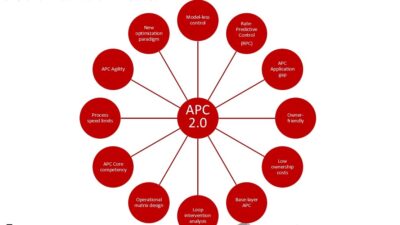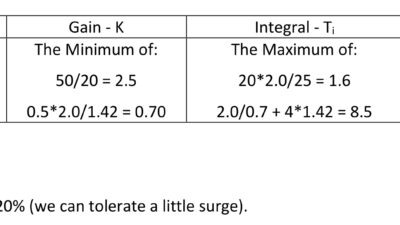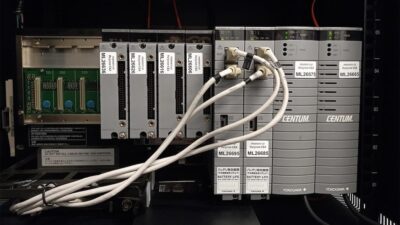The interface between people and machines has improved dramatically in the past few years. Does that mean you should replace current human-machine interfaces (HMIs) and supervisory control and data-acquisition (SCADA) systems with new technology? Several companies in the process industries have said “yes.
The interface between people and machines has improved dramatically in the past few years. Does that mean you should replace current human-machine interfaces (HMIs) and supervisory control and data-acquisition (SCADA) systems with new technology? Several companies in the process industries have said “yes.” They’ve replaced or retrofitted existing systems, deriving benefits ranging from easier operator training and more secure process-data tracking to solving the hardware obsolescence problem. Here are synopses of their experiences. For more information on these projects and products, visit the Websites listed.
Reduce operator learning curves
Success in the highly competitive steel industry demands shipping quality products in a reliable and timely fashion. Manufacturing requires sophisticated control systems that ensure smooth operations. At Midlothian, TX-based Chapparal Steel, the process begins by shredding recyclable scrap metal into fist size pieces, then melting it down for recasting into marketable products. David Quesenberry, the company’s automation manager, puts it this way: “All of our manufacturing processes are interconnected. Our success depends on moving the steel seamlessly through all of them.”
The Chapparal team contracted with partner AMI to design, specify, and implement an automation system for their Virginia plant. After reviewing the project, they decided to use GE Fanuc Series 90-70 and Series 90-30 PLCs and Genius I/O and Cimplicity HMI software to ensure reliability and tight integration with GE drive systems. Ethernet connections carry information from the controllers to terminals running HMI software located throughout the facility.
The new installation provides expanded functionality and easier use. AMI’s engineering manager Bernardo Sainz explains: “The system offers better quality screens with more colors and gradients, along with faster communication, enabling the rapid refresh rates that are so important in the rolling mill.”
The HMI system’s process-visualization capability reduces the learning curve for operating the line. Says Quesenberry, “Any operator can know instantly exactly what goes on in the plant and where every piece of equipment is located.” In addition, GE Fanuc’s data historian collects, archives, and distributes up to 100,000 data points of plant floor process information per server at high speeds in real time, permitting outstanding process visibility and improvement.
www.chapusa.com ; www.gefanuc.com
Increase viewable I/O points
Sometimes project constraints preclude the replacement of existing control hardware and software, such as at the Relativistic Heavy-Ion Collider at the Brookhaven National Laboratory where hundreds of physicists study what the universe might have looked like in the first moments after the “Big Bang.”
Until recently, the collider’s cryogenics control system consisted of a Crisp Automation distributed control system (DCS) running on old, but redundant, VAX minicomputers. Although engineers were satisfied with the system’s performance, the DOS-based operator interface was cumbersome, inflexible, and visually unappealing. Based on an obsolete PC work station, it included hundreds of displays but offered limited connectivity. No data could be sent across the network and the architecture offered no practical upgrade path. Replacing the system would have required the recreation of displays, a daunting investment, and a lengthy shutdown.
The original system integrator, Salem Automation, recommended an InduSoft solution because of InduSoft’s close relationship with Crisp. According to Patrick Talty, an applications engineer at Brookhaven, “InduSoft already offered a migration path from Crisp, so existing displays could be re-hosted on the newer hardware.”
The migration proved seamless. An InduSoft communications driver talks directly with the original VAX control system. “The system now includes 10,000 viewable I/O points, including the legacy points, as well as additional data sources,” says Talty. “There are a dozen operator stations, plus Web clients that anybody can pull from any secure browser. InduSoft’s use of [Microsoft] Windows resources allowed the applications staff to consolidate a number of output screens, putting all data from three or four original displays onto a single graphic,” Talty continued. “The plant can now control the VAXs via TCP/IP networking instead of DECNET. The software integrates so well that operators often can’t tell that the control processes are running on different hardware.”
www.bnl.gov ; www.crispauto.com ; www.indusoft.com
Secure process-tracking data
Pharmaceutical products must offer uncompromising quality. To sell products in the U.S., companies must comply with a plethora of Food and Drug Administration (FDA) regulations. Increasingly, authorities are concerned about bioterrorism and product tampering.
To accommodate increased demand for its diabetes care and diagnostic products, Roche Diagnostics established a new rack-packing line at its facility in Mannheim Germany using production and performance management software from Wonderware, a business unit of Invensys Systems, Inc. Managing Director Uwe Drücker of Drücker Steuerungssysteme GmbH put it this way: “In selecting components for this unique situation, our engineers needed to find a solution that was not only easy to use, but would provide a high level of data integrity and comply with the FDA’s demand for comprehensive process tracking.”
The new rack-packing line selects vials of diagnostics from pallets, sorts them, and joins them together into a rack pack. The packs move to a rotary table for further processing. Once labels are applied, one camera verifies that the matrix bar code is correct and accurately positioned while another ensures that vials and caps are the correct color. Then, the packs proceed to the final packing stages. InTouch software guides operators through the process step by step so that they no longer have to select from a multitude of screen options.
To substantiate every process step, Roche Diagnostics must document which operator completed each task and when that task took place. Combining InTouch’s user management features with those provided with Microsoft Windows 2000 allowed Roche to archive that information and design strong security into the Mannheim plant without giving users access to the operating system. In addition, the installation runs a redundant system in parallel. If it detects primary system failure, it automatically switches to master mode, creating an effective fail-safe.
“Not only did our plant achieve sufficient validation,” commented Drücker, “we extended the Wonderware solution to quickly implement and validate a second vial-packing line based on the rack-pack design.”
www.roche.com/div_diag.htm ; www.druecker.de ; www.wonderware.com
Boost quality assurance
Pharmaceutical companies outside the U.S. must also contend with stringent compliance requirements. Leciva, a. s., is the largest pharmaceutical manufacturer in the Czech Republic, dominating both the Czech and Slovak markets. The company produces formulated solutions and collects them in storage tanks. Solutions from the tanks feed automated filling machines that fill the final deliverable product—ampoules. Like the FDA, the Czech State Institute for Control of Pharmaceuticals has established good manufacturing practice (GMP) standards, requiring documentation of every aspect of the production process.
Leciva selected Iconics’ Genesis32 software suite for their production facilities in Prague. The suite included GraphWorX32, TrendWorX32, and ScriptWorX32 running on a Siemens Simatic S7 OPC server. Systems integrator SIDAT CZ installed and configured the system, which monitors production, provides clear operator directions and information via HMI screens, and collects and stores data in Microsoft Excel spreadsheets, presenting it in numerical and graphical formats. According to Milan Turinsky, Leciva control systems engineer, “The Iconics Genesis32 software system has significantly increased our documentation completeness and our level of quality assurance.”
www.zentiva.cz (click on English); www.iconics.com ; www.siemens.com
Stay connected via the Web
Air-separation plants cool air until it liquifies, then boil off the desired gases in distillation columns, producing nitrogen, oxygen, argon, and the like. As an economical alternative to shipping these product gasses in cylinders or tanks, unattended plants are often constructed adjacent to separation plants to use the gas. Taiyo Nippon Sanso Corp. built Japan’s first such plant in 1935 and now provides them all over the world.
The company also developed the world’s first cryogenic oxygen distillation technique for producing 18O-isotope water used in certain tomographic cancer diagnostic systems. The application requires a reliable non-stop system featuring standard IEC 61131-3 programming languages and remote operation through Web-based SCADA. Because process parameters vary from one air-separation plant to the next, each new installation requires specialized re-engineering and re-configuration.
To ensure a stable and uninterrupted gas supply to its manufacturing, the company installed a Stardom FCN autonomous controller and VDS SCADA from Yokogawa Electric Corp. that have dual-redundant CPUs, networks, and power supplies. Performing remote operations on Web-based SCADA requires no additional software. According to Masahiro Ikeda and Isao Shimamura Taiyo Nippon Sanso’s design department, “During the test-run phase, engineers put in long hours making checks and adjustments. Now, the Web-based SCADA allows us to check and modify the logic using only a Web client. When I am working on-site, I no longer have to use my mobile to keep in touch with the control room.”
www.tn-sanso.co.jp/en ; www.yokogawa.com
Upgrade outdated water systems
Rapid population growth can be a mixed blessing, straining resources and infrastructure. In 1980, Gilbert, AZ, was a quiet town of less than 6,000. By 2005, that number had exploded to 180,000. The town water treatment plant, built in the mid-1990s to process 15 million gallons of water a day, and later expanded to triple that capacity, struggled to keep pace. The plant’s initial SCADA system consisted of Siemens 505 hardware programmed in APT format. Although the system functioned adequately, Siemens no longer develops either product, leaving the town with a limited time to come up with a better configuration.
Chris Lynch, a principal of DL Engineering & Controls (DLEC) in Phoenix had been supporting the wastewater facility for more than 15 years, and had performed a turnkey upgrade to the SCADA system. Now, drawing on his understanding of the town’s requirements, he proposed several alternatives.
The choice with the lowest up-front cost would re-program the existing system to meet current needs. Unfortunately, that approach would not eliminate hardware obsolescence. In addition, the existing software structure required PCs running Windows 98, which Microsoft no longer supports. Retaining current hardware and reprogramming the entire control system with ladder logic would have met the software needs, but at considerably greater expense, while maintenance and obtaining spare parts would become increasingly difficult.
Ultimately, the town replaced the control system with Allen-Bradley ControlLogix hardware using HMI and PLC programming with Wonderware Intouch 9.5. DLEC completed most of the retrofit during downtime that had already been scheduled for plant expansion. The new interface used standard hardware and software, including IEEE standard programming, which made it possible to move the software to other sites.
According to DLEC, the new hardware and software should have double the lifespan of the replaced system. It has also decreased support and training costs while increasing support options.
www.dlecinc.com ; www.rockwellautomation.com ; www.ab.com
For more information on these projects, visit the company Websites listed or search HMI or human-machine interface atop www.controleng.com .
Steve Scheiber is a contributing editor to Control Engineering. Contact him at [email protected]



